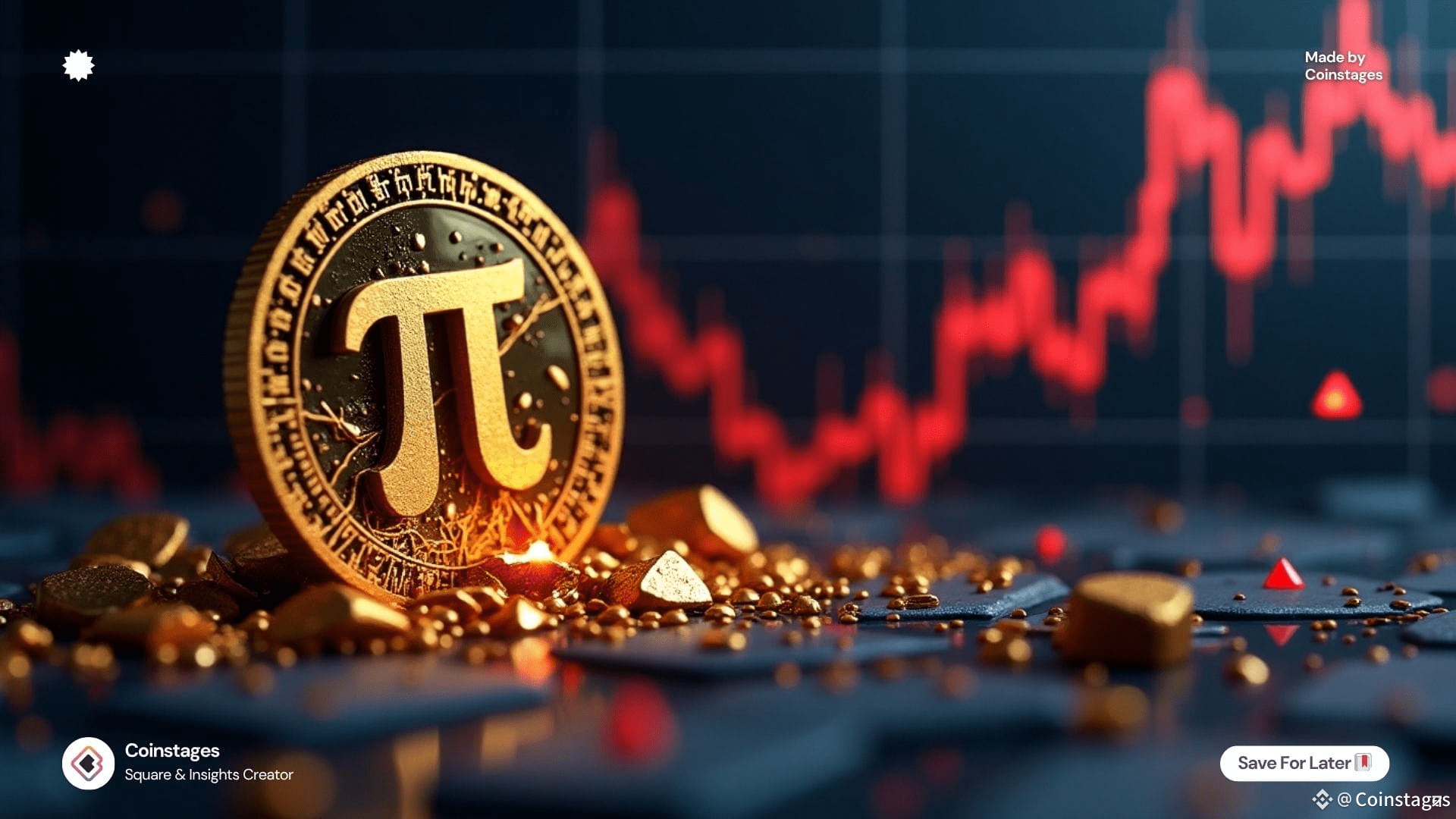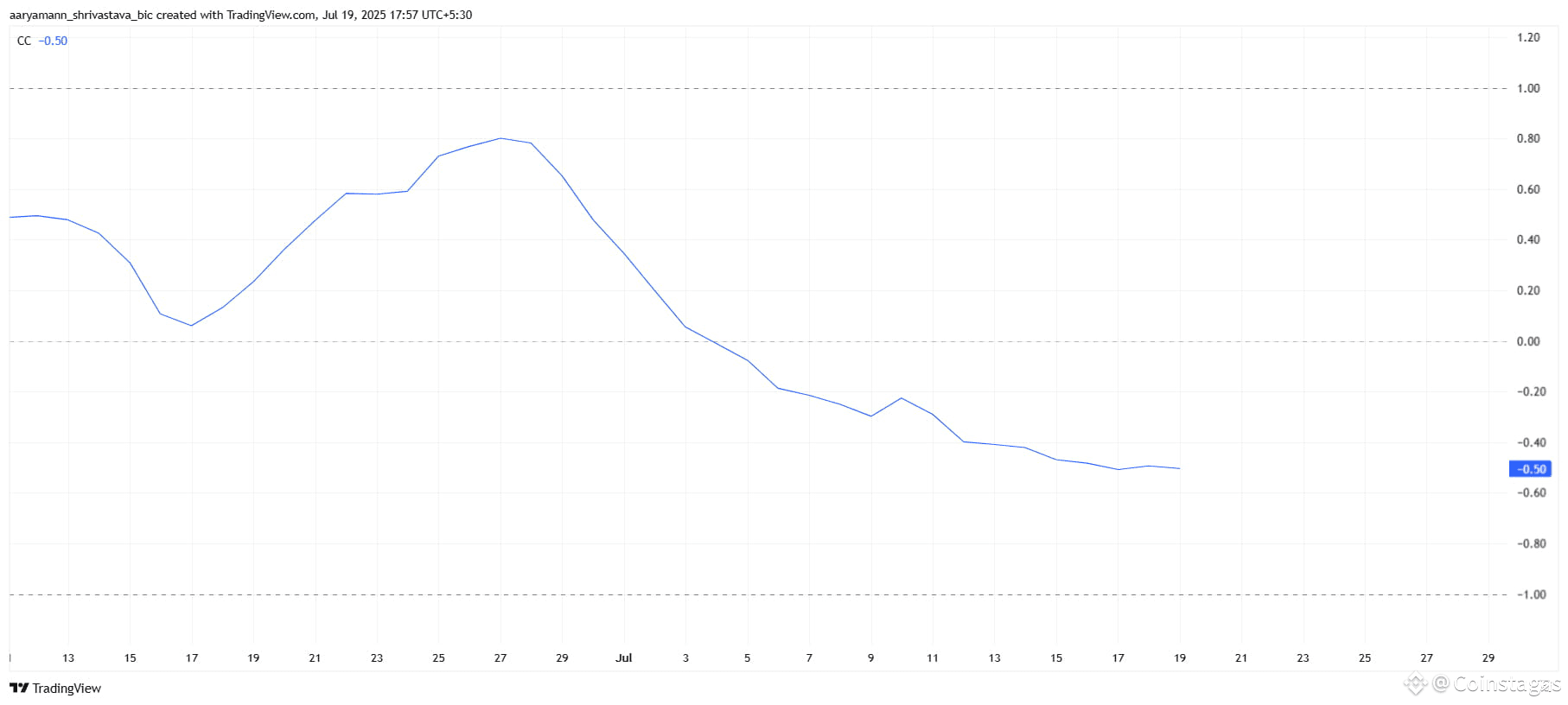
Pi Coin's (PI) price is once again teetering on the brink, dangerously close to its all-time low (ATL). This top coin, once a beacon of promise for millions of mobile miners, is facing sustained selling pressure amidst bearish technical indicators and a lack of significant bullish catalysts. The question looms: can Pi Coin find crucial support, or is it headed for new historic losses?
Persistent Downtrend: Technicals Signal Continued Weakness 🔴📊
Pi Coin has been in a prolonged downtrend, with its price consistently moving below a declining resistance trend line since its peak earlier this year. Currently trading around $0.40 to $0.46, it's just a whisper away from its ATL of $0.40. Key technical indicators reinforce this bearish outlook:

Relative Strength Index (RSI): The RSI remains firmly in bearish territory (often below 50), indicating weakening momentum and strong selling pressure. Some readings show it near 32.96, just above oversold, suggesting minimal buying interest.
Chaikin Money Flow (CMF): This indicator often shows funds flowing out of the market, confirming a lack of investor confidence.
Moving Average Convergence/Divergence (MACD): The MACD is also in bearish territory, showing a downward trend and confirming a bearish price prediction.
Exponential Moving Averages (EMAs): PI's price is consistently trading well below key EMAs (20-day, 50-day, and 200-day), signaling a sustained downtrend with lower highs and lower lows.
Despite occasional bounces from the $0.40 level in April and June, buyers' strength has waned, failing to trigger sustained recoveries.
Supply Dynamics & Market Sentiment: Challenges Ahead 🌐📉
Several fundamental factors contribute to Pi Coin's persistent price weakness. The delayed mainnet launch, initially scheduled for 2024 and pushed to January 2025 (and potentially later), has eroded investor confidence. Large-scale token unlocks, with millions of PI tokens entering circulation, create significant selling pressure, especially from early miners eager to realize profits. The absence of a substantial burn mechanism further exacerbates this supply overhang.
Furthermore, Pi Coin exhibits a negative correlation with Bitcoin (-0.27), meaning it tends to move in the opposite direction of the leading cryptocurrency. This makes recovery harder, especially during broader market rallies. Overall market sentiment towards Pi Coin remains weak, with weighted sentiment declining, indicating reduced confidence among holders. This lack of new inflows and community disappointment over clarity from the core team continues to weigh heavily on the price.
Critical Levels: The Fight for Survival 🚧
Pi Coin is now within 10-11% of its ATL of $0.40. If the current support at $0.40 fails to hold, the price could plummet further, with the next significant Fibonacci support level as low as $0.082. A break below $0.40 would mark a new all-time low and signal a major loss for holders.
Conversely, a confirmed breakout above a descending channel, or if the price can establish support above $0.45 and overcome psychological resistance at $0.50 to $0.51, could signal a potential short-term recovery. A break above $0.55 could push PI towards $0.63–$0.74 in the coming weeks, potentially reversing the bearish bias. However, without major catalysts like a successful mainnet launch, significant exchange listings, or robust ecosystem growth, the path of least resistance for Pi Coin's price prediction remains downward.
Conclusion ✨
Pi Coin's price is at a perilous point, dangerously close to its all-time low due to a confirmed downtrend, bearish technical indicators, and fundamental challenges like delayed mainnet launches and token unlocks. While key support levels offer a glimmer of hope, a sustained recovery for this top coin hinges on a significant shift in market sentiment and decisive catalysts. Investors must exercise extreme caution as Pi Coin navigates this critical period.
Disclaimer ⚠️: This article is for informational purposes only and does not constitute financial advice. Cryptocurrency investments carry a high level of risk and volatility. Always conduct your own research (DYOR) and consult a professional financial advisor before making any investment decisions.


